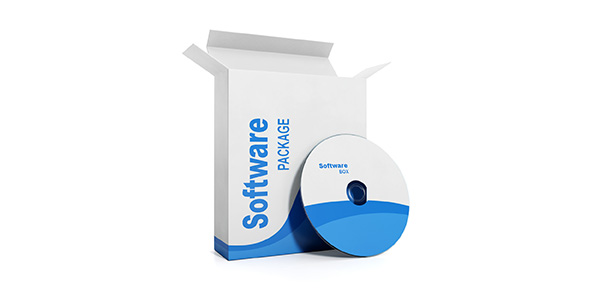Related Flashcards
Related Topics
Cards In This Set
| Front | Back |
|
Leadership
|
-Leadership is the process of motivating employees and teams to accomplish stated objectives
-While leading is one of the functions of management, not all managers are leaders and vice versa |
|
Leadership Trait Theories
|
-Attempted to identify certain that all leaders have
-Were largely discarded in favor of leadership behavior theories |
|
4 Leadership Behavior Theories
|
1.University of Iowa (3 leadership styles and effectiveness)
2. Ohio State (2 behavioral dimensions: initiating structure and consideration) 3. University of Michigan Studies (2 behavioral dimensions: employee vs production oriented) 4. Managerial Grid |
|
Leadership Behavior Theories:
University of Iowa |
3 leadership styles and their effectiveness
-autocratic style: dictates work methods, centralizes decision making, limit participation among employees/subordinates -democratic style: involves others in decision making, does not hesitate to delegate authority, allows for and encourages feedback -laissez-faire style: maintains hands off leadership style, allows team to make its own decisions *Inconclusive regarding leadership style and performance; employee satisfaction indicated that employees prefer democratic leaders |
|
Leadership Behavior Theories:
Ohio State |
2 Behavioral Dimensions
-Initiating structure: how a leader defines their role and the roles of group members to reach goals -Consideration: how a leader trusts and respects group members and vice versa *Leadership high in both initiating structure and consideration sometimes high performance and satisfaction, but not always |
|
Leadership Behavior Theories:
University of Michigan |
2 Behavior Dimensions
-Employee oriented: emphasize interpersonal relationships -Production oriented: emphasize task aspect of job *Studies concluded that leaders with high employee orientation generally achieved high group performance and employee satisfaction |
|
Leadership Behavior Theories:
Managerial Grid |
*Managerial grid constructed based on University of Iowa, Ohio State, and University of Michigan studies
2 Behavior Dimensions -Concern for people -Concern for production *5 styles of leadership were named, correspondingly high and low on these 2 dimensions. Grid concluded most effective managers were high on both dimensions |
|
3 Contingency Theories of Leadership
|
1. Fiedler Contingency Model (effective group performance based on leader's style and effectiveness)
2. Situational Leadership Theory (Hersey and Blanchard ranking and leadership styles) 3. Path-Goal Model (leadership behaviors change based on situational contingency variables) |
|
Contingency Theories of Leadership:
Fiedler Contingency Model |
2 Factors of Effective Group Performance
-Leader's Style -Amount of control and influence in the situation *Model is based on the idea that different types of situations call for different leadership styles 2 Basic Leadership Styles -Task Oriented -Relationship Oriented *Model assumed that a leader's style could not be changed 3 Key Situational Factors in Leader Effectiveness -Leader-member relations -Task Structure -Position Power |
|
Contingency Theories of Leadership:
Situational Leadership Theory |
*Focuses on the followers' readiness, which refers to the extent to which employees can and wish to complete a specific objective
2 Leadership Dimensions (Hersey and Blanchard Ranking and 4 Leadership Styles) -Telling: high task-low relationship -Selling: high task-high relationship -Participating: low task-high relationship -Delegating: low task-low relationship *As followers reach higher levels of readiness, the leader should decrease management of their activities and also decrease relationship behaviors |
|
Contingency Theories of Leadership:
Path-Goal Model |
Path-Goal Theory
-Leader's job to guide followers as they strive to accomplish their goals -Leader's job to ensure individual follower goals are compatible with the organization 4 Leadership Behaviors -Directive -Supportive -Participative -Achievement Oriented *Assumes that leaders are flexible and can change their leadership style and behaviors to suit a specific situation 2 Situational Contingency Variables -Environment: outside follower's control -Follower's personal characteristics |
|
4 Contemporary View of Leadership
|
1. Leader-Member Exchange Theory
2. Transformational-Transactional Leadership 3. Charismatic-Visionary Leadership 4. Team Leadership |
|
Contemporary View of Leadership:
Leader-Member Exchange Theory |
-Leader-member exchange theory states that leaders establish in-groups and out-groups ammong employees early on in a leader's interaction with a follower
-Employees in the in-group will generally be more favored and measurements like turnover and job satisfaction will reflect this -Leaders will reward employees in the in-group and punish those in the out-group |
|
Contemporary View of Leadership:
Transformational-Transactional Leadership |
-Transactional leaders lead primarily by exchanging rewards for performance in an attempt to motivate employees
-Transformational leaders inspire followers to aachieve outcomes above and beyond the norm -Research indicates that transformational leaders were seen as more effective and more promotable, and therefore tend to increase satisfaction and reduce turnover among their followers |
|
Contemporary View of Leadership:
Charismatic-Visionary Leadership |
*Charismatic leader is a self-motivated individual who has a large personality and can influence an individual's behaviors
5 Charismatic Leaders Personal Characteristic -Visionary -Ability to articulate that vision -Willingness to take risks to achieve that vision -Sensitivity to both environmental constraints and follower needs -Behaviors that are out of the ordinary |






